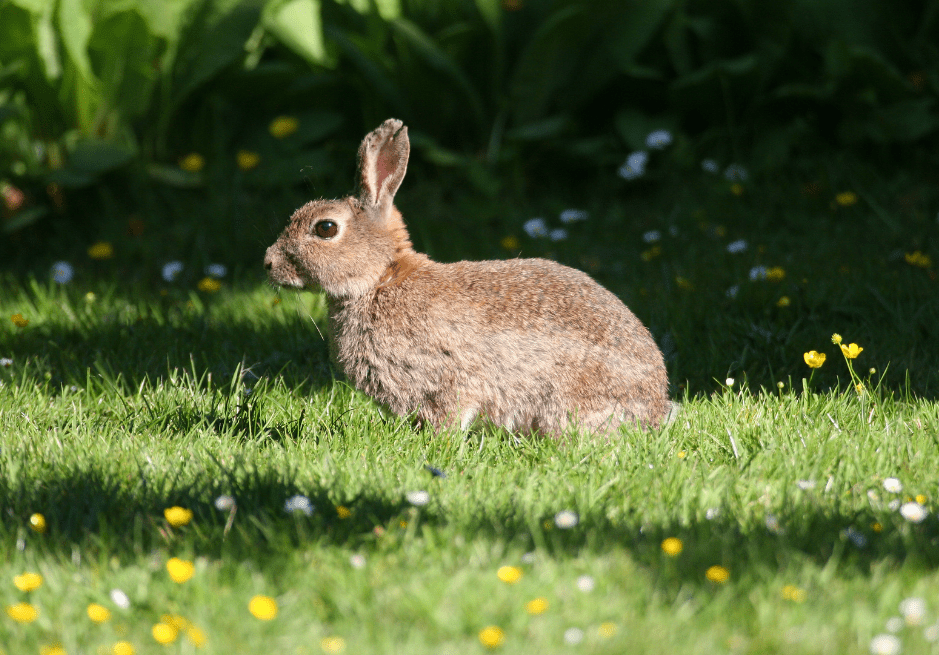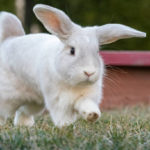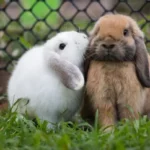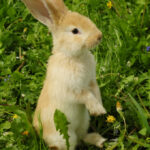There is a little breed of rabbit called the Polish rabbit, and they weigh less than 4 pounds on average.
These rabbits, whose name suggests they originated in the United States, may trace their origins to England.
They were among the first breeds of rabbits to be recognized by the American Rabbit Breeders Association (ARBA).
The Polish rabbit has a good temperament and is an excellent companion for many people.
Their low maintenance requirements and compact stature make them ideal housemates.
Below you’ll find information about the Polish rabbit that should help you decide if this breed is right for you.
HISTORY OF THE POLISH RABBIT
Polish rabbits were bred for their meat, but nowadays, many people keep them as pets.
Additionally, these rabbits are frequently viewed in the context of the show ring.
Many attribute the “polish” in this rabbit’s name to the sheen of its fur.
They were created in England, but by 1912 had made their way to America.
BREED ORIGIN
It is not known for sure where the Polish rabbit first arose, but it is believed that it was formed in the early 1800s by the breeding of a Dutch rabbit with a Himalayan rabbit.
Around the turn of the century, they were one of the most widely raised European meat breeds, particularly in Belgium.
There was a high demand for their meat because of its high quality despite its small size.
After arriving in the United States in 1912, the Polish language was quickly accepted by the ARBA.
Since then, they’ve spread throughout the pet trade and even been used to develop new breeds, such as the miniature Netherland Dwarf.
CHARACTERISTICS OF THE POLISH RABBIT
The Polish rabbit is an adorable dwarf variety.
Popular as pets and excellent show rabbits, litter sizes for these bunnies average between two and four babies.
APPEARANCE
Weights for this little type of rabbit range from about 2.5 to 3.5 pounds.
They have short, broad, and round bodies with full cheeks and big eyes.
The ears are small and pointed, and they stand straight on top of the head.
COAT
The flyback fur of a Polish is short and very silky.
In other words, stroking the fur in the opposite direction causes it to spring back into place.
Aside from the occasional bath, their fur is also quite low-maintenance.
COLOR
The American Rabbit Breeders’ Association recognizes six possible coat colors in the Polish rabbit.
There are several different types of white dogs, including the ruby-eyed white (REW), blue-eyed white (BEW), chocolate, blue-eyed, black-eyed, and broken (which is any color mixed with white).
TEMPERAMENT
The Polish rabbit is an excellent pet because of its pleasant demeanor.
They are an adorable and lovable species that is also very obedient and devoted to their human family.
These bunnies will actively seek you out in order to be caressed and cuddled, and they will not tolerate being confined for lengthy periods of time.
If you’re there, too, they’ll have a blast getting some exercise and playing with toys.
When hosting your Polish guests, it’s extremely important to give them their space. They may try to bite if they are terrified.
LIFESPAN
The average lifespan of a Polish rabbit is 5.6 years, however, with careful care, this can be increased.
KNOWN HEALTH ISSUES
There are no known health difficulties unique to the Polish breed, but they are still susceptible to the same problems as any other species of rabbit.
These are the primary worries, and we’ve listed them here.
- Malocclusion — This occurs when your rabbit’s top and lower teeth are out of alignment, preventing natural chewing from wearing down your rabbit’s teeth. Dental checks should be performed routinely. Make sure your rabbit gets enough hay every day.
- GI Stasis — Such a disease, in which digestion slows down or ceases altogether, can be fatal. Low or no appetite, diarrhea, and fatigue are all symptoms. If found early, it is treatable.
- Ear Mites — Rabbits as pets frequently contract this parasite. If your rabbit is afflicted, you may notice that they shake their heads frequently. Your pet vet will be able to help.
- Flystrike — During this time, flies lay their eggs on dirty areas of fur, and the young flies proceed to consume the rabbit from the inside out. Seizures, immobility, and skin irritations are all possible outcomes. Maintain a tidy rear end, especially as your rabbit ages.
Like other rabbits, these are susceptible to back problems if handled roughly or dropped.
Visits to the vet on a regular basis will help detect health issues before they worsen.
Also, check the breeder’s reputation to make sure they’re legitimate before making a purchase.
DAILY LIFE
Now that we’ve covered the Polish rabbit’s background and qualities, let’s see what it’s like to share your home with one.
Due to their diminutive stature, they are ideally suited for first-time pet owners because of the low maintenance they demand.
What follows is a discussion of their specific dietary, physical activity, hygiene, and housing demands.
What Should I Feed My Polish Rabbit?
Polish rabbits, like other rabbits diets, like to eat a lot of hay. Hay is an important part of a healthy immune system and helps teeth grow.
Hay will help your body digest food and keep fur balls from getting too big. Your Polish rabbit will wear down its teeth as it chews on the hay.
Hay should make up about 70% of what your rabbit eats.
Try to give them a variety of foods, but know that leafy greens work best.
You will also need to give your rabbit pellets along with the hay. Pellets have the vitamins and minerals that your rabbit needs to live a healthy life.
Aim to give your rabbit 1/2 cup of pellets for every 5 pounds it weighs. This needs to be paired with a lot of clean, fresh water.
Your rabbit can never get too much water. Check the water dish often to make sure that it doesn’t get dirty, and change the water often.
You should give your bunny a cup or two of vegetables to make sure they get everything they need to live.
Try to give them a variety of foods, but know that leafy greens work best.
Save fruits as treats for your rabbit or to help him learn.
Polish Rabbits As Pets
Even though Polish rabbits are small and active, that doesn’t mean they are good pets for young children.
This breed of rabbit will be a lot of fun for adults and older kids, but it might not be the best pet for all of your kids.
Small rabbits are easy to pick up, which could hurt kids who want to carry their pets around.
Everyone should be fine as long as an adult is watching.
If you live in a small apartment with not much space, the bunny might not have enough room to run around.
In the same way, you won’t be able to give the bunny the time it needs if you are out of the house a lot.
Because of this, a Polish rabbit is a good choice for big families and homes.
This breed of rabbit loves attention, and once it gets used to you, it will let you pick it up and pet it.
They like to play and chew, so make sure they have a lot of toys. This will also keep them from getting bored and breaking things because they have nothing to do.
Look for small toys like balls and other things that roll that can be played with.
This is a great pet for people who have time to take care of it.
How Active Are Polish Rabbits?
Polish rabbis are very active, so you need to make sure you have the time and space for them.
They need to be out of their cages for at least five hours a day, and as much of that time as possible should be spent with other animals.
If you can’t give them that much time to run around and spend at least some of that time with them, you shouldn’t get a Polish rabbit.
The cages for polish rabbits are small because they are small, but that doesn’t mean they don’t need a lot of space.
A run will work, but these active little animals usually have enough room. The best thing you can do for these bunnies is to let them take over a whole room, or even better, your whole house.
If you’re going to let your bunny run around in a room, make sure it’s rabbit-proofed first.
Bunnies like to chew on things, so you should get rid of or put away anything you don’t want them to chew on.
You should also plan to spend time with your bunny when it is out of its cage. Sitting or lying down on the floor where your bunny runs around is a great way to do this.
Final Words
The Polish Rabbit is a dwarf breed that makes a great family pet because it is small, friendly, and doesn’t need much care.
These bunnies don’t need much space, so they can live in small apartments inside.
They also like to be held and cuddled, and they will come to you to be petted or held.
Keep the Polish inside most of the time to keep them safe, but give them time to roam and play so they can live healthy and happy life.
Do you think that maybe one of these small rabbits is for you?






